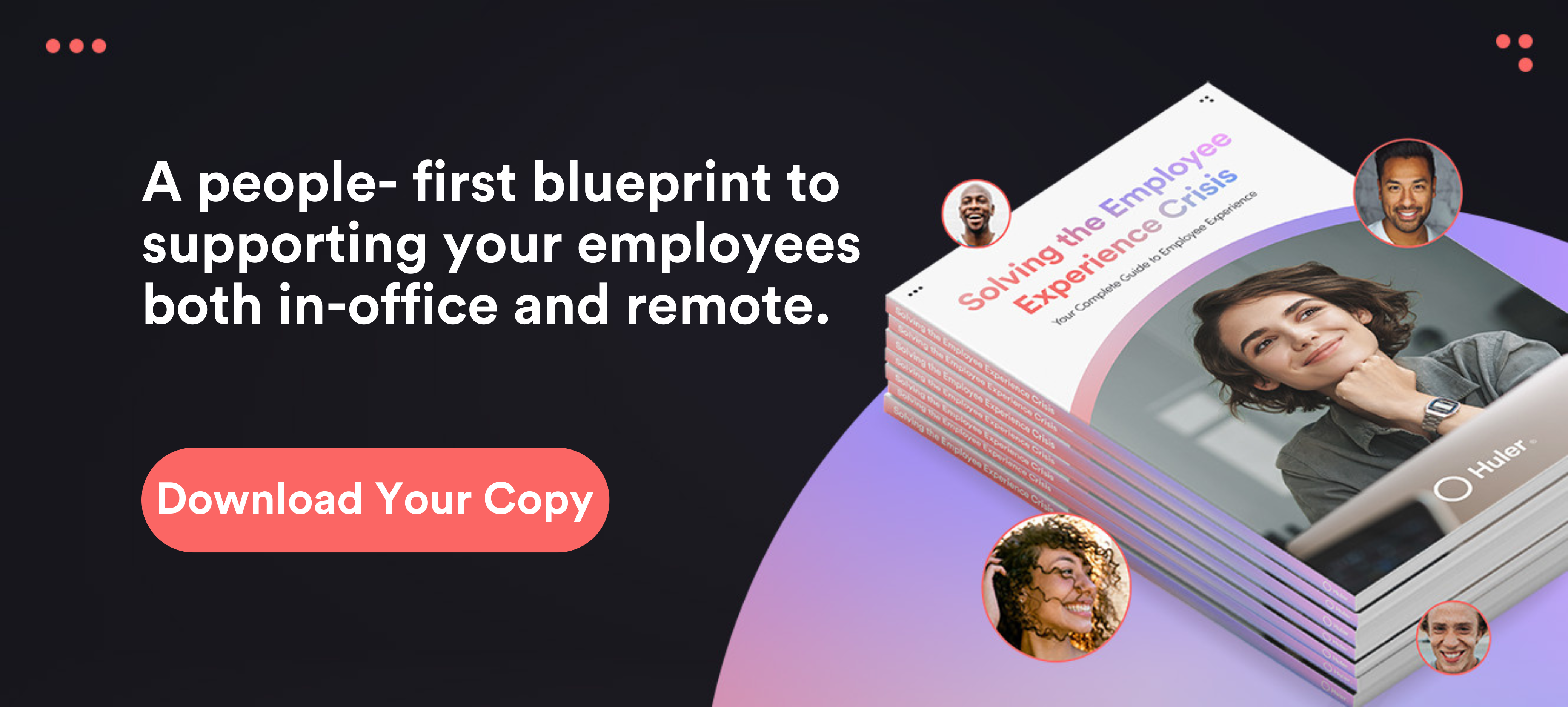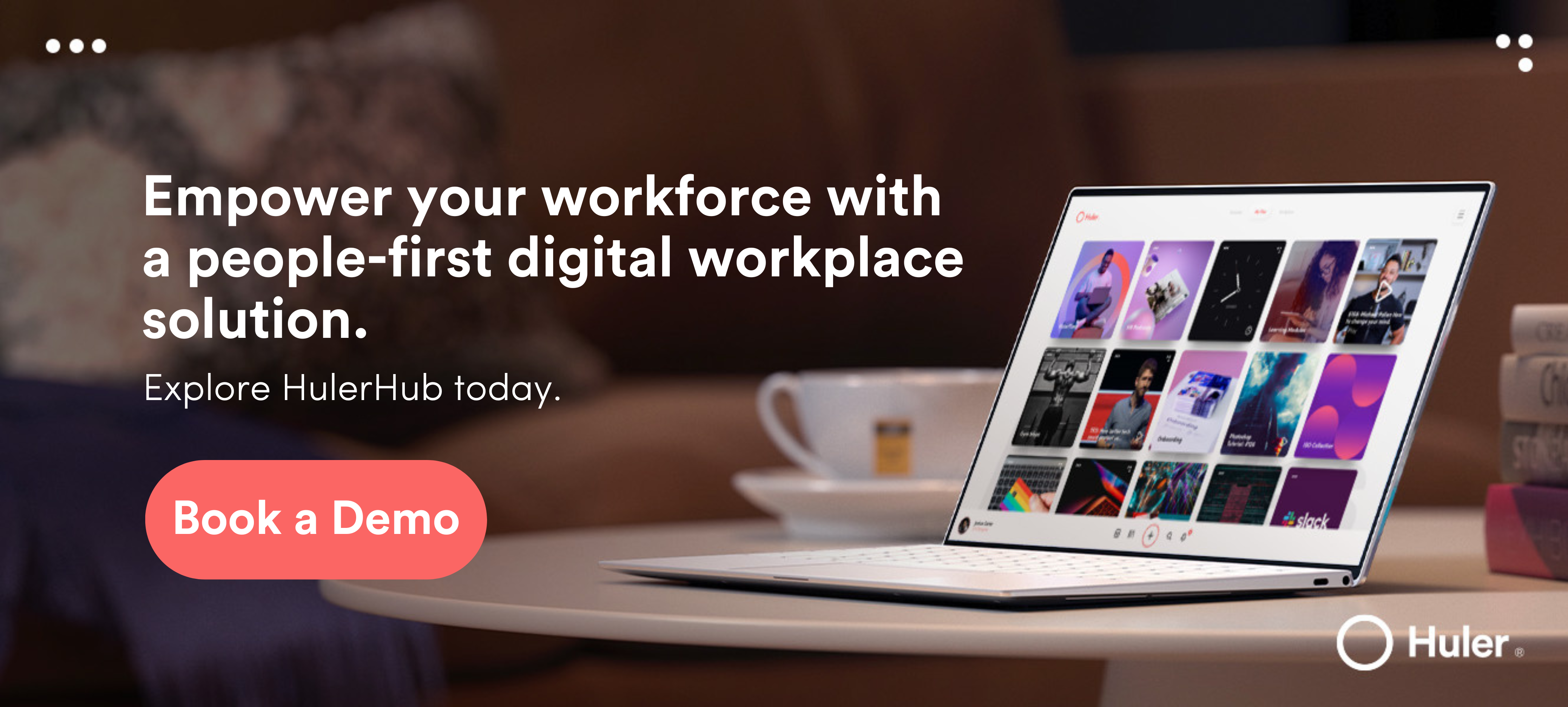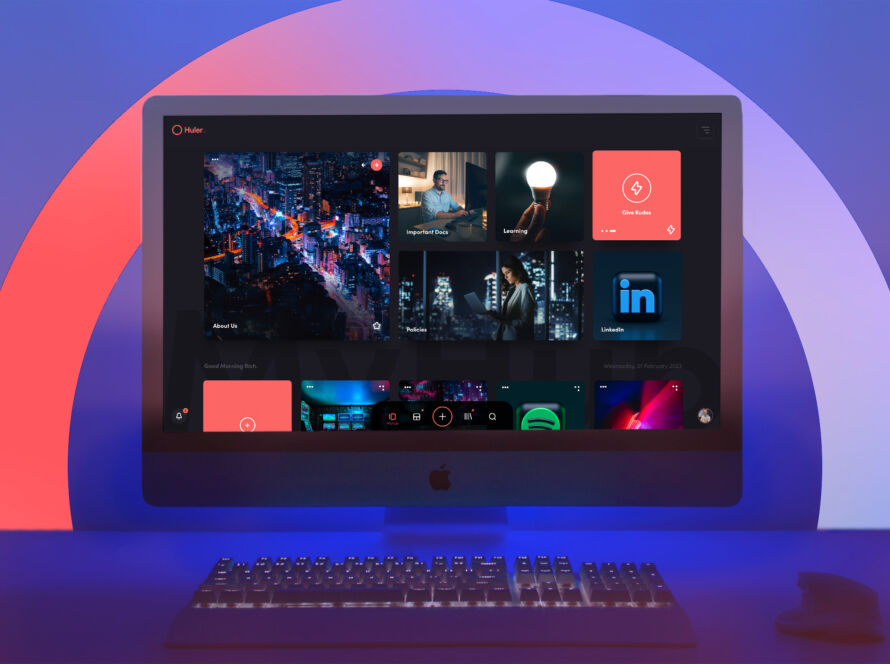The working environment is evolving. Just a few years ago, remote and hybrid work was considered a rare perk offered by only the most forward-thinking employers. Today, it’s becoming standard practice.
And a good job used to be defined by a good salary in a good location at an attractive company — but that’s changing too. Today, people also want and expect their employer to recognise and support their wellbeing.
Prioritising wellbeing at work not only helps your employees’ mental health but also has a significant impact on your business. By fostering positive employee experiences, you can boost employee productivity and reduce staff turnover¹.
But don’t just take our word for it. Studies show that addressing workplace wellbeing increases productivity by as much as 12%², and that for every pound invested in employee wellbeing initiatives companies see an ROI of 5 to 12x within a year³
With many employees now spending some or all of their working lives away from the office, it’s never been more important to boost employee wellbeing and productivity through positive digital experiences.
In this article, we’ll explain how you can boost wellbeing and productivity, while benefiting your business’ bottom line.
Finding the right information in the right way
The modern employee has to juggle multiple platforms and systems on any given day. If these systems aren’t integrated seamlessly, then finding the right app, file, or information can be a struggle. Particularly if you’re using a traditional intranet, most of which are designed for admin rather than a good employee experience. As a result, they are often clunky and impractical.
Not only can this be stressful for employees, it can also be a huge drain on productivity. The time that employees spend searching for what they need is time spent not making progress in their work, which can lead to a poorer, more stressful employee experience.
Strategies to help
As we know from our personal lives, the right digital tools can make our lives easier. Through our smartphones, for example, we can easily access information about the weather whenever we like. The same goes for the workplace: people should be able to easily access information about their work whenever — and however — they like.
And when businesses make this happen, employees’ productivity increases as a result. In a report by The Economist Intelligence Unit, 42% of respondents said that the ability to access information quickly and easily had the greatest impact on how productive they are.⁴
A well-designed employee experience platform improves access to information by prioritising the employee experience and simplifying information sharing. This way, employees can access everything they need from one central place.
Customisable dashboards
- The right employee experience platform allows employees to personalise their dashboards, allowing them easy access to the important information that they need.
- Employers should be able to customise employees’ dashboards by sharing information with them. Employers should be able to send this information to specific people or to a wider group.
Notification centres
- Notification centres mean that employees receive updates, such as company news, announcements or task updates, on one accessible interface so they don’t have to trawl through email chains to find the information they need.
- Notifications can be collated and grouped by type so that key information doesn’t get lost and employees can navigate to it easily.
- Administrator control allows employers to remove unimportant information, so employees are only presented with the relevant, up-to-date information they need.
Simplifying workflows
The average worker uses 9.4 different applications everyday⁵ . Switching between multiple apps can be tiring and makes workflows needlessly complicated. Without a way to connect disparate systems and integrate your tools, documents, resources, and applications into your business’s workflows, your employees will have a hard time getting work done. This can result in a loop of stress, frustration and inefficiency, all of which can affect wellbeing. For new starters, needlessly complicated workflows can result in a bombardment of complicated information and processes. This can be overwhelming and affect their wellbeing from day one.
Strategies to help
A good digital workplace solution should solve these problems by integrating multiple systems and platforms into one centralised hub. This way, instead of consistently jumping from one system to another, employees can enjoy simple and intuitive workflows. This can help relieve stress and frustration and allow people to get on with their work more effectively.
Rather than getting in the way of their wellbeing, if done right, technology and mental health can go hand in hand. In fact, 92% of employees claim that technology that helps them do their job efficiently has a positive effect on their workplace satisfaction.⁶ And satisfied employees tend to be productive employees. The right digital workplace solution will offer the following:
Customisation for individual workflows
- Employees should be able to create tailored dashboards to optimise their workflows, helping them view their tasks in the way that they like. This can enable them to complete their work more productively.
Easy communication and collaboration within digital workflows
- While employees should be able to customise their workflows, they should also be able to circulate information, communicate and collaborate with colleagues through consistent processes.
- Teams should be able to share information outside of the organisation too, for example by providing new starters with onboarding information before they have officially joined the organisation.
By focusing on practical measures that improve wellbeing, businesses can reduce the rates of presenteeism, which is when employees attend work even when they’re unwell (and unproductive)⁷. One study estimates the cost of presenteeism to UK businesses at £605 per person per year⁸.
Creating a consistent workplace
As an ever-increasing number of businesses adopt remote or hybrid working models, employees must have a sense of consistency across their physical and digital workplace.
Company culture should not only apply to those in the office. By making sure this extends across all workplaces for all employees, you help create a consistent employee experience, which can improve wellbeing.
This also applies to day-to-day aspects of work such as providing positive feedback. If an employee is praised in the office, they feel motivated, which promotes their wellbeing. Hybrid and remote workers should also be recognised publicly, so they feel that the company and their colleagues appreciate their work.
Without this consistency, employees might find remote or hybrid work isolating. It can leave people feeling cut off from the business and their colleagues, or bogged down in technical difficulties that hamper productivity. Ultimately, this can affect their wellbeing, and as a result, how they go about their work. According to one report, 38% of HR managers were concerned about losing staff to employers who offered better, more inclusive, hybrid working models⁹.
Strategies to help
The right workplace tools need to provide a sense of continuity between the office and home. With all your employees plugged into a seamless digital workplace, everyone is on the same page, creating a sense of community and connection among dispersed teams. You can do this in several ways.
Consistent information — and style
- Extend your company’s culture to the digital workplace. If your business is informal, the language used in your digital workplace should be too. This includes your ensuring your company’s aesthetic and brand stretches across all your workspaces.
- Ensuring that all the information that’s accessible in the office is also accessible, and easy to navigate, in the digital workplace.
Including remote and hybrid workers in the workplace
- Including remote and hybrid workers in office events, for example utilising video calls for more social occasions, such as birthdays. This can help foster a sense of community and camaraderie.
- Ensuring there are employee recognition features across the digital and physical workplaces can help people feel valued for the work they’re doing. Public praise between colleagues, wherever they work, helps employees feel a valued part of the team.
Promote work/life balance
-
- When working at home, employees might find themselves working later as the distinction between their working life and personal life becomes blurred. By encouraging workers to sign off when the working day ends, they will feel supported in their wellbeing. You could go further and provide employees with a version of the legal right to disconnect: the right to switch off and ignore work communications outside of working hours.
- By making sure employees are not overworked, this can help them return to work refreshed, which can lead to higher productivity.
Creating a wellbeing-first culture for productivity — and beyond
The link between employee wellbeing and productivity is clear. By focussing on building a people-first workplace that actively supports employee wellbeing, not only will your employees be happier and more likely to stick around, they’ll also be more efficient and effective in their work.
Of course, the steps listed above aren’t all businesses can and should do to support employees’ wellbeing. Supporting wellbeing means putting in place robust measures, including:
- Protections against bullying, harassment, and excessive workloads or inflexible working hours
- Measures to reduce work-related mental health risk factors
- A culture of open, honest communication about wellbeing, including receiving feedback on working practices
- Policies for supporting those experiencing mental health problems, including wellbeing days, where employees are allowed time off to recharge.
These are important and necessary steps to developing any mental health at work strategy. But wellbeing extends beyond these necessary and important steps, into the daily experiences of employees. Poor working processes not only affect employees’ stress levels, but demonstrate that businesses aren’t taking their employees’ wellbeing seriously.
In today’s world of digital work and dispersed teams, one of the most impactful ways to put wellbeing first is to empower employees with the right tools, allowing them to feel connected to their team, colleagues, and the wider company culture no matter where they set up camp.
That’s why we built HulerHub, an employee experience platform designed to support employee engagement, wellbeing and productivity by delivering an amazing employee experience across all your teams — remote, hybrid or in the office.
Accessible on any device, anywhere, HulerHub simplifies information sharing, communication, and collaboration. If you’d like to find out more about how Huler can help boost wellbeing and productivity across your organisation, get in touch today and talk to one of our experts.
¹ LinkedIn 2020 Global Talent Trends Report
² How to Support Mental Health at Work
³ Research reveals boost to bottom-line for businesses investing in employee wellbeing
⁴ Mobility, performance and engagement
⁶ Workplace productivity Statistics That Will Blow Your Mind
⁷ What’s the Link Between Wellbeing and Productivity? – Energym
⁸ The Cost of Presenteeism (…And Why It’s Not Just About Money)







